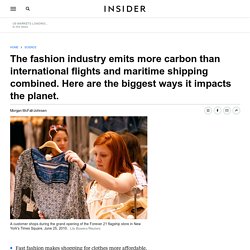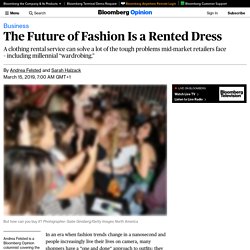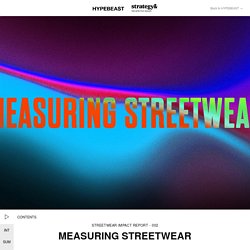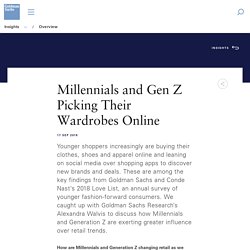

How fast fashion hurts the planet through pollution and waste. Fast fashion makes shopping for clothes more affordable, but it comes at an environmental cost.The fashion industry produces 10% of all humanity's carbon emissions, is the second-largest consumer of the world's water supply, and pollutes the oceans with microplastics.Visit Business Insider's homepage for more stories.

Some parts of modern life are, at this point, widely known to cause environmental harm — flying overseas, using disposable plastic items, and even driving to and from work, for example. But when it comes to our clothes, the impacts are less obvious. As consumers worldwide buy more clothes, the growing market for cheap items and new styles is taking a toll on the environment. On average, people bought 60% more garments in 2014 than they did in 2000. Fashion production makes up 10% of humanity's carbon emissions, dries up water sources, and pollutes rivers and streams.
What's more, 85% of all textiles go to the dump each year. Rental Clothing Is The Future of Fashion. Photographer: Gabe Ginsberg/Getty Images North America In an era when fashion trends change in a nanosecond and people increasingly live their lives on camera, many shoppers have a “one and done” approach to outfits: they want to wear a look a single time and then move on to the next.

But mid-range retailers angling to help shoppers look good in selfies don’t want to end up with a pile of unsold multicolor sequin party dresses, and they can’t bear the increasing cost of consumers wearing and then returning garments. Could rental services be the solution? It’s a well-established practice at the high end, but getting the economics to work for affordable brands is tricky. And it looks like the enemy of efficient retail – it’s a complicated business that could sap traditional sales. But the risks haven’t stopped Hennes & Mauritz AB from thinking about it. It’s worth a shot.
You heard it here first: The renting economy. Julie Gable is a Trends Analyst covering the European region, publishing observations on Mintel Trends that discuss innovations, creative marketing campaigns and new product launches.

Mintel has been at the forefront of predicting the trends that matter most, calling them early and accurately, over the last 15 years. In our series You Heard It Here First we take a look at some of the predictions that we’ve made and where they are today. The first place to look to understand markets and consumers, enabling you to make better decisions faster. In 2011, “Mintel trend ‘Why Buy,‘” signifying how consumers started to weigh-up if it is worth taking the risk of buying something that comes with responsibility, maintenance and often a considerable financial investment – or if simply renting it would be a better option. The problem increased after the recession when the traditional goal of home ownership began to decline.
Streetwear Market Statistics & Global Trends. This article is part of the Streetwear Impact Report .

The report includes data collected through two main research methods: our consumer survey and industry survey. Full description of methodology can be found in the Introduction. Insights - Millennials and Gen Z Picking Their Wardrobes Online. Younger shoppers increasingly are buying their clothes, shoes and apparel online and leaning on social media over shopping apps to discover new brands and deals.

These are among the key findings from Goldman Sachs and Conde Nast’s 2018 Love List, an annual survey of younger fashion-forward consumers. We caught up with Goldman Sachs Research’s Alexandra Walvis to discuss how Millennials and Generation Z are exerting greater influence over retail trends. The sharing economy is here to stay and here’s why - Magazine UK. Reading time: 3 Minutes From dog-walking to caravan rentals, a host of unexpected businesses are finding uses for latent supply through the sharing economy The sharing economy has truly grown up in the past ten years.

People do not wear at least 50 percent of their wardrobes, says study. Marjorie van Elven Thursday, 16 August 2018 We all know most people don’t wear every single piece of clothing they own. But the percentage of clothes that go unworn is a lot higher than most consumers think. A study with 18,000 heads of households in 20 countries, conducted by relocation and removals company Movinga, revealed that the majority of consumers around the world are highly delusional about how much they own versus how much they actually wear. Surveyors were invited to answer the following question: “what percentage of your wardrobe hasn’t been worn in the last 12 months?”. Belgians and Americans wasting the most clothes Belgium came first on the list, as Belgian consumers thought they hadn’t worn 26 percent of their wardrobe in the last year, when they actually hadn’t worn 88 percent -- that leaves them with a “delusion level” of 62 percent. See the full list here: Images: Pixabay, courtesy of Movinga Help keep independent fashion journalism free by donating here.
Why renting your wardrobe makes fashion sense. “You want Chanel?

There’s a woman on our site who has everything. Any bag you want, you name it — she has it.”